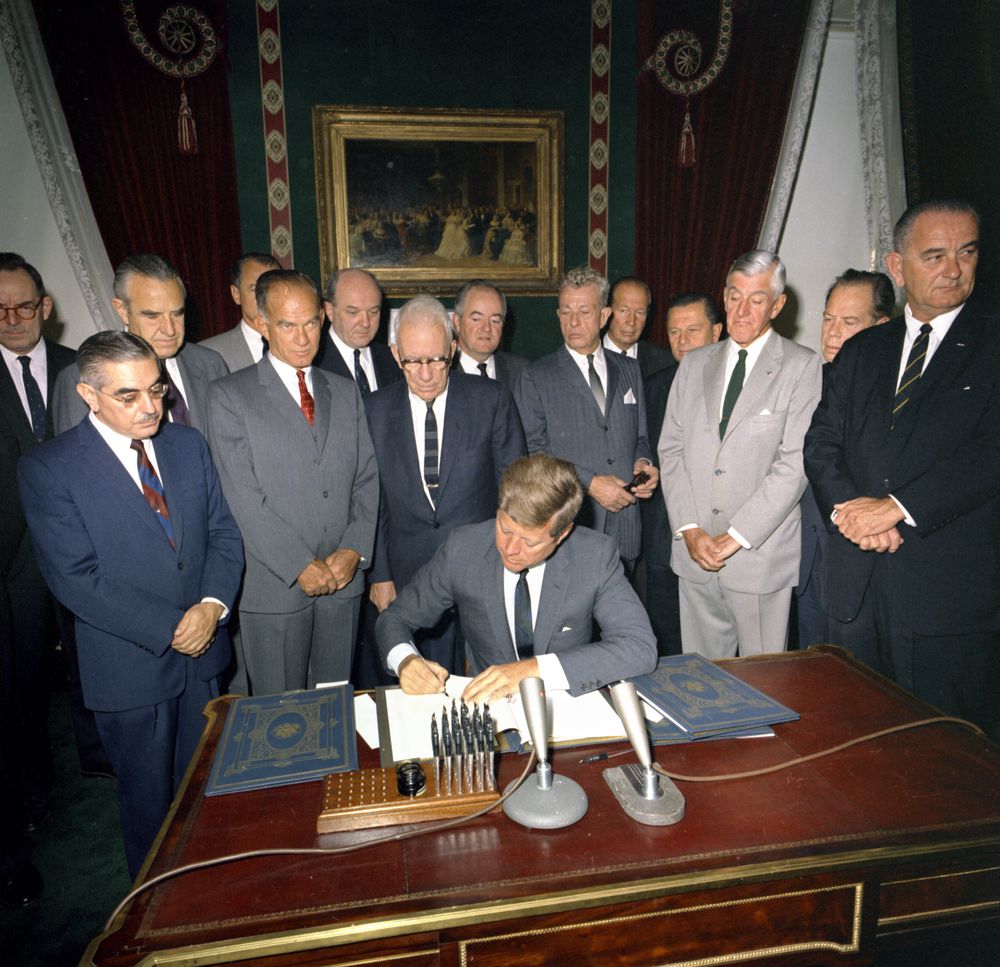Fallout and The Soviet Anti-Nuclear Movement
Protests to hydrogen-bomb development and testing continued to gain momentum in both countries. Some 700,000 people were affected by the radiation of the Kazakhstan test. At least a dozen villages suffered severe health damage, particularly fetuses. Future tests exposed the Kazakh people to even more fallout, and the Soviets monitored the airborne radioactive debris from American, French and Chinese tests during the 1960s. Sakharov was powerfully affected by these effects and began to push for limiting nuclear bomb testing. He used his influence to force future tests underground, which led to the atmospheric test ban of 1963.

Despite the Limited Test Ban Treaty, the Soviet military conducted a hydrogen-bomb test with a moderate yield of 150-200 kilotons on January 16, 1965. Touted as a peaceful use of nuclear explosions, in particular to make a lake, the test buried the bomb in a hole so shallow-a mere 360 feet, with rocks blown more than 6 miles away-that fallout was nearly certain to occur. As a result, a radioactive cloud swept over several residential settlements. The soldiers, who were from central Asian republics, had no protective gear to shield them from the radioactive debris; therefore, nearly all were victims of severe radiation exposure. The lake was called Lake Atomkul or "Atomic Lake."

Rodents who drank from the lake would die, and fish stocked there grew quickly to twice their normal size. The eggs they laid resulted in hatchlings that were blind, had no tails or fins and soon died. Hazardous concentrations of strontium-90 and cesiuim-137 were found in their bodies. After several years, fish were once again able to survive and spawn in the lake, and after 1985 limited consumption of them was allowed.
A popular anti-nuclear bomb movement called the Nevada-Semipalatinsk Movement sprung up during the final years of Soviet power in March 1989. Led by Olzhas Suleimenov, a Kazakh poet, writer, stirring orator and successful organizer, the movement was marked by demonstrations held in the capitol, Alma-Ata. Some protesters were shot by security police, which only served to strengthen the movement. More than two million signatures were collected, and the movement played a large role in getting the Soviet test sites shut down in August 1991.